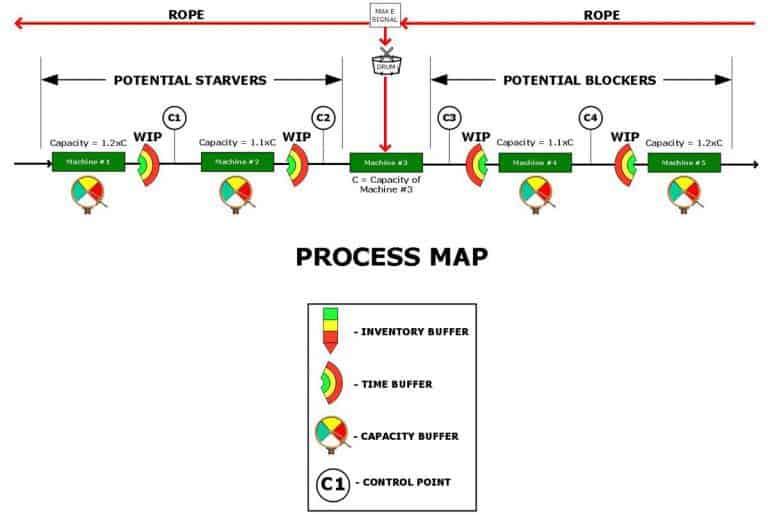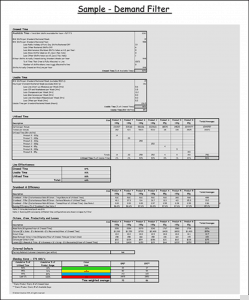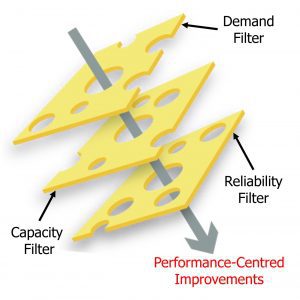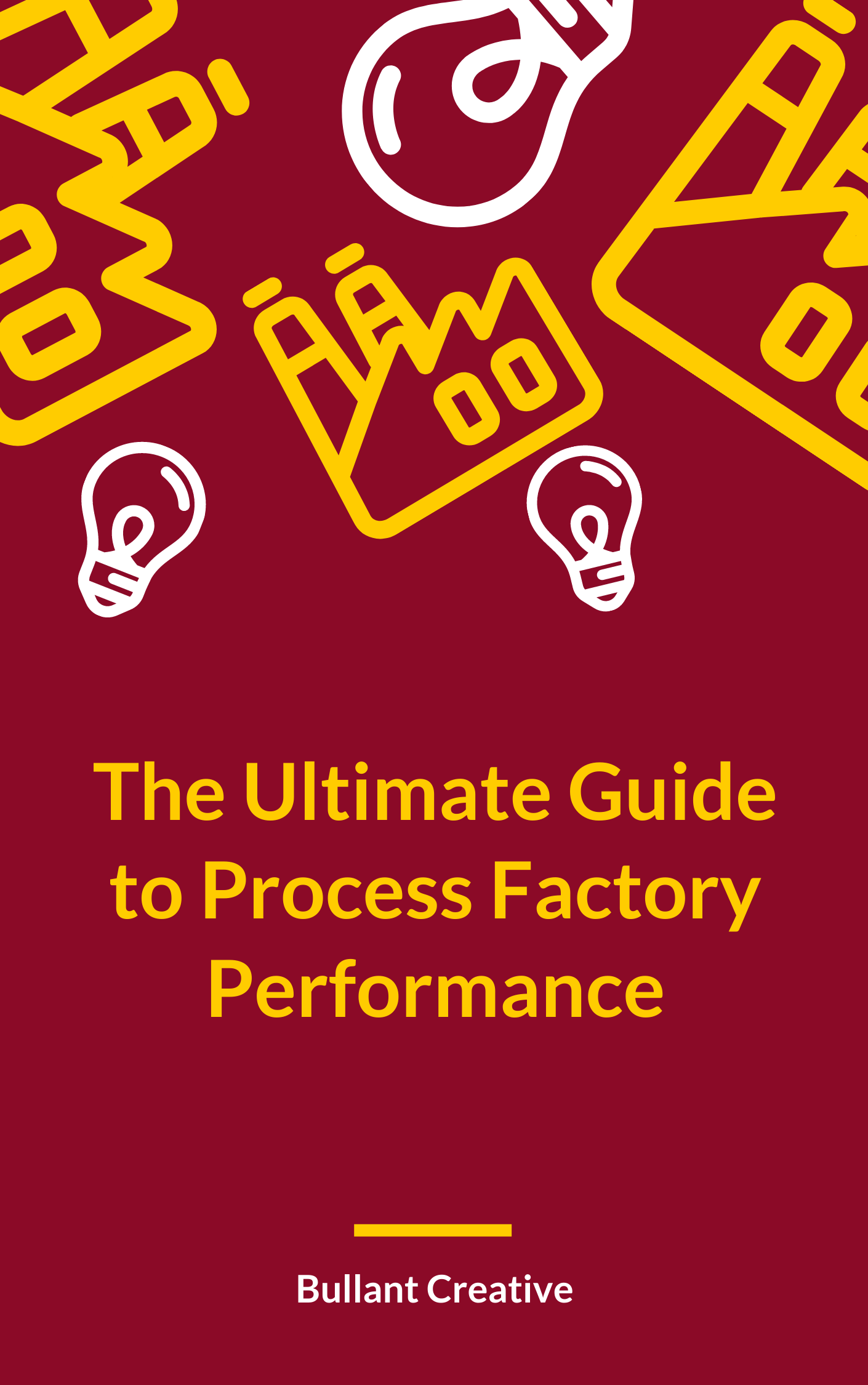Line Performance Optimisation (Bullant Filters)
The Bullant Filters are a structured way of identifying high-value performance constraints in complex processing lines. They are tailor-made for the flow lines found in the process industry.
Bullant Filters are used to;
- create current state process maps
- identify high-value Performance-Centred Improvements
- document the future state process maps after the completion of Performance-Centred Improvements
- provide base data for Value Stream Maps.
Bullant Filters are used on flow lines where a bottleneck (the Drum) is resident within a group of many interconnected and automated workstations, as shown below.
We enlist the help of operations personnel and use statistical methods to create a process map using the 3 Bullant Filters;
Like the alignment of holes in swiss cheese slices, an issue identified in all 3 filters is a Performance-Centred Improvement opportunity that can add the maximum value.
The Bullant Filters can be used to correct a single, mission critical reliability issue right through to a longer term, supply chain performance improvement strategy.
Demand Filter
The metrics used to monitor the performance of a flow line are summarised in a Demand Filter.
A Demand Filter contains the “data box” information for a Value Stream Map including;
- UpTime (Overall Equipment Effectiveness (OEE) for the process industry)
- Crewed Time
- Utilisation
- Yield
- Running Efficiency
- Financial performance measures including Octane.
- Quality measures
- Product Cycle Rates
The Demand Filter is also used to determine the most important products as measured by the time required on the line.
Capacity Filter
A Capacity Filter is used to document the capacity distribution of machines and buffers along a flow line.
A Capacity Filter includes:
- Distribution of instantaneous machine capacities for the different running configurations
- Buffer capacities for the different running configurations
- Yield loss and giveaway
Reliability Filter
The Reliability Filter is used to establish how the efficiencies of different workstations, and the behaviour of the buffers, effects the efficiency of the total flow line.
There are 3 techniques that can be used to create the Reliability Filter;
- Performance Monitoring
Our Bullant Performance Monitoring System (BPMS) can be used to establish the current efficiency of a flow line.
- 3D Performance Simulation
Factory Modelling software can be used to show how a flow line is effected by the performance of upstream and downstream equipment and buffers.
- Criticality Assessment
Our Criticality Assessment tool is used to establish the points of instability in a line. Points of instability are those parts of a production line where there is a special reason for unreliability, where normal reliability techniques cannot be applied.
Performance-Centred Improvements
Performance-Centred Improvements are opportunities that appear as constraints in all three of the Bullant Filters. They are high-impact and can shift the performance of a complex line in a substantial way. They form the basis of a larger Performance Project.







